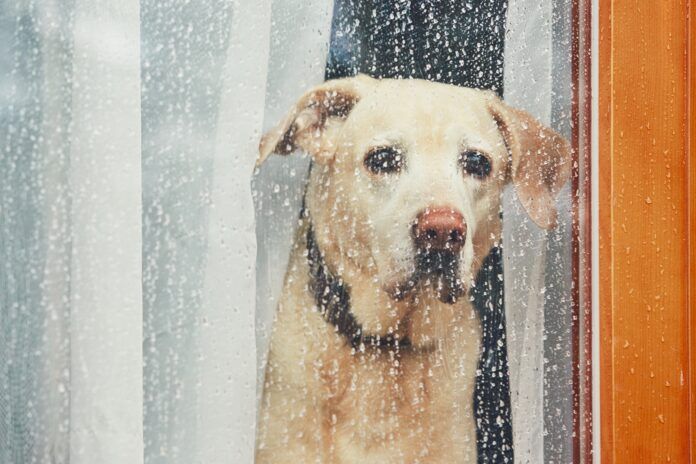Here in Georgia, the end of last week was windy, waterlogged, and a good reminder of how important it can be for everyone—especially pet owners—to be prepared for natural disasters. Although I’ve lived in hurricane-prone regions before, I moved to the area a month ago from the northeastern U.S. and neither my human nor dog hurricane kits are quite what they used to be. The impending arrival of Hurricane Helene not only called for refreshing them, it got me thinking about what I really needed on hand to feel like I could keep my dog safe.
Putting Together an Emergency Kit for Your Dog
Even if you don’t live in an area where natural disasters occur often, it’s a good idea to keep some kind of emergency kit on hand. I’ve only had to use mine a few times, thank goodness, but it’s been invaluable when I’ve needed it.
Some things to include in an emergency kit are:
- Food: I prefer to have a minimum of two weeks of food on hand. If your dog is on a special diet, remember that supply lines can be affected if the damage is bad enough. It might be worth storing more if you can.
- Water: It’s generally recommended that you have at least 3 days’ worth of clean drinking water available. That’s typically calculated as 1 gallon of water per person per day plus extra for pets. I plan an extra gallon per day for my Airedale, Carmen, who weighs about 50 pounds.
- Medications: If your dog is on medication, make sure you have several weeks’ worth available. Again, you don’t want to be frantically searching for an essential medication if disaster damage slows down shipments.
- First-aid kit: A basic pet first-aid kit can be a big help for minor injuries, especially if you can’t make it to a veterinarian. For some suggestions on what to include, see “12 Items to Include in Your DIY Dog First-Aid Kit.”
- Paperwork: It’s a good idea to keep printed copies of your dog’s vaccine records, vet contact info, microchip information, food and medication schedules, and a photo in your emergency kit. If you need to send your dog with someone else—for example, if you were badly injured and had to be taken to the hospital—this can make all the difference in keeping her safe and healthy until you can get back to her.
- Extra collar and leash: It’s always a good idea to have spares in case something breaks.
- Crate or carrier: It’s important to have an easily transportable, secure way to contain your pet. If you have a large dog, consider a collapsable travel crate. The last thing you want is for her to bolt in a strange place.
- Bowls and bedding: While not essential, it’s a huge help to have food and water bowls on hand. I keep a water bucket that I can clip to the crate door. Familiar bedding can help a dog feel more comfortable in an unfamiliar environment.
Preparing for Evacuation
Evacuating with dogs can be difficult, especially if you have multiple animals or if they are not used to car travel. If you think you might need to evacuate, go as early as you can. Pack the car well in advance. If you need to get several crates or carriers in the car, I’d recommend doing a test run to make sure everything fits the way you think it will. Trying to outrun a storm is the wrong time to discover that you need an extra inch of clearance to get the travel crates in the back seat.
You’ll also need a plan for where you are going to go and where you will stay when you get there. Pet-friendly hotels can book up fast. Some states, of which Georgia is one, provide resources for evacuating pet owners that include lists of pet-friendly places to stay.
Pack your emergency kit and, if at all possible make sure your dog is wearing a collar or harness with a current identification and rabies tags.
Sheltering at Home
For the most part, the things you need to shelter at home with your dog during a natural disaster will be in your emergency kit: food, medication, first-aid kit, and so on. Although I don’t use them day-to-day, I do stock potty pads in case taking my dog outside to relieve herself is unsafe. As a note, if you decide to use something similar, you will need to work with your dog first to be sure she’s comfortable using them.
Keep in mind that the intensity of a hurricane or tropical storm can be frightening to your dog even if she is not usually afraid of storms. The same goes for blizzards, floods, fires, and other natural disasters. Extreme conditions can be scary for all involved. Watch for signs of stress and be prepared to comfort your dog if she needs it.
Finally, if you find yourself stuck inside with an energetic young dog (which is exactly what happened to me last week), it doesn’t hurt to have some entertainment planned. It’ll help keep you both sane until the weather clears.
The long and short of all of this is that being prepared can save a lot of stress and potential heartache. If you’re not sure what to do, the U.S. government, along with organizations such as the American Red Cross, offer resources aimed at helping pet owners prepare for emergencies. If you haven’t done so already, I highly recommend making an emergency kit for your dogs and spending a bit of time thinking through what you might need to do in the event of a natural disaster.






